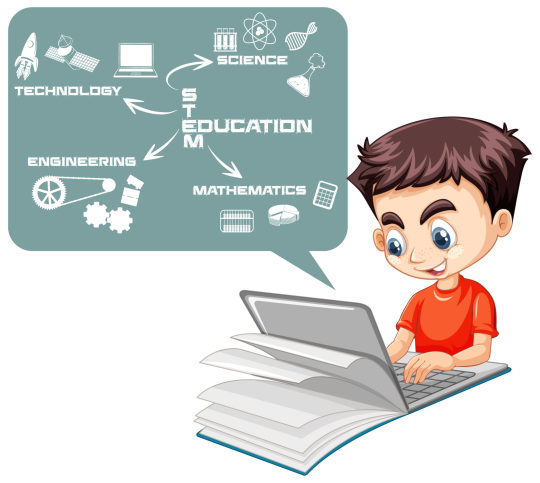#wealthylife
Explore tagged Tumblr posts
Text

🎮 New Video Alert! 🎥
Welcome to the world of the De Blanc family—a wealthy, glamorous, and enigmatic household in The Sims 4! In this new gameplay series, we’ll dive into their luxurious lifestyle, complex relationships, and all the drama that comes with being at the top. Will the De Blancs’ fortune be their blessing or their downfall? Tune in to find out! 💎🏰
Watch the first episode now! 🎬✨
https://youtu.be/YQgdlx4QQpk
Mods mentioned in the video:
Kiarasims4Mods Philantropist Trait
Pandasama Childbirth Mod
Somic and Severinka Functional Drinks Tray
Reigningsims Deco Butler Sims
2 notes
·
View notes
Text
I crave a wealthy quiet life.
#Simplicity#Abundance#Tranquility#QuietLiving#WealthyLife#Contentment#PeacefulMindset#FinancialFreedom#Luxury#Minimalism#Harmony#QuietWealth#BalancedLife#Wellness#SereneLife#Comfort#DreamLife#MindfulLiving#Prosperity#Elegance#Lifegoals
7 notes
·
View notes
Text
WE ARE LEADER IN C-suite Positions and Companies World Wide.💵💰🌍📈
#rosetti #rosettiinvestments #rosettiglobalnetwork #rosettiglobalinvestments #rosettinetwork #rosettieastworld #rosettiusa #rosettiuae #rosettiplatform #RosettiCsuite #RosettiDubaiNetwork #rosettiinvestmentscom #RosettiApp #rosettitrading #rosettistocks #rosettienergies #rosetticrypto #rosettiequity #rosettiUSAnetwork #wealthylife #wealthymindset #wealthylifestyle #wealthyliving #hustlehard #hustleharder #hustle #carlovers #carinvestments #business
#rosetti#RosettiInvestments#rosettiglobalnetwork#rosettiglobalinvestments#rosettinetwork#rosettieastworld#rosettiusa#rosettiuae#rosettiplatform#rosetticsuite#rosettidubainetwork#rosettiinvestmentscom#rosettiapp#rosettitrading#rosettistocks#rosettienergies#rosetticrypto#rosettiequity#rosettiusanetwork#wealthylife#wealthymindset#wealthylifestyle#wealthyliving#hustlehard#hustle harder#hustle#carlovers#carinvestments#business#money
0 notes
Text
The Life of a Billionaire's Son
#BillionaireSon#WealthyLife#RichKids#BillionaireLifestyle#LuxuryLiving#NextGenBillionaire#WealthAndPrivilege#HeirToFortune#RichAndFamous#HighSociety#FutureBillionaire#EliteLifestyle#WealthManagement#InheritedWealth#RichLife#PrivilegedLife#AffluentLiving#BillionaireFamily#OpulentLife#LuxuriousLifestyle#BillionaireHeir#HighNetWorth#WealthyFamily#EliteStatus#BillionaireKids#BillionaireSuccessor
0 notes
Text

💹🚀 Ready to level up your financial game? Start a Systematic Investment Plan (SIP) right away! 🌱💙 Dream big, start small and watch your money grow over time.
Contact us :-
Websites : - https://prahiminvestments.com/
Call today If you have Question Ask us : 093157 11866 , 01204150300
#sipwealth#financialgrowth#InvestmentJourney#moneymindset#sip#prahiminvestments#WealthBuildingTips#sipstrategy#SecureYourFuture#growyourmoney#financialempowerment#InvestmentWisdom#sipmagic#SmartInvesting#moneygoals#WealthyLife#financialfreedom2023#InvestmentStrategy
0 notes
Text
Success At It's Best
(7) Success At Its The Best - YouTube
#SuccessMindset#WealthBuilding#MotivationMonday#FinancialGoals#SuccessStory#EntrepreneurLife#AchieveYourDreams#WealthCreation#MotivatedMindset#SuccessDriven#FinancialSuccess#MotivationNation#WealthyLife#HustleHard#SuccessTips#MoneyMotivation#AmbitiousGoals#WealthJourney#MotivationDaily#SuccessHabits
0 notes
Text
#ProsperityMindset#BusinessStrategy#WealthyLife#TikTokInspiration#TikTokMotivation#SuccessHacks#WealthyEntrepreneur#TikTokSuccess#EntrepreneurialSpirit#FinancialGrowth#SuccessJourney#EntrepreneurLife#ViralContent#TikTokAbundance#TikTokBusiness#WealthyPath#TikTokProsperity#TikTokViral#EntrepreneurWisdom
0 notes
Text
How to spot the perfect children scheme for your child’s personality
How to spot the perfect children scheme for your child’s personality

understand your child’s personality: Every child has a unique personality that influences their interests strengths and weaknesses take the time to observe and understand your child’s preferences behavior patterns and learning style . This knowledge will help you identify schemes that complement their personality and encourage their holistic development.
Assess child development needs: Consider your child’s developmental stage and specific needs for instance if your child is in the early years prioritize schemes that focus on early childhood education and social interaction older children might benefit from programs that emphasize skill-building extracurricular activities or career guidance match the schemes objectives with your child’s developmental requirements.
Research child welfare programs: Child welfare programs aim to safeguard children’s rights and promote their well-being look for schemes that address healthcare nutrition mental health and overall safety check if the program provides medical insurance regular check-ups vaccinations or counseling services prioritize schemes that prioritize your child’s physical and emotional well-being.
Consider parenting and educational support: Parenting programs and educational support are crucial for a child’s growth look for schemes that offer parenting workshops guidance on child-rearing practices or resources to enhance your parenting skills evaluate the educational aspects of the scheme such as quality schools scholarships tuition assistance or access to educational resources that align with your child’s interests and goals.
Explore financial support financial support :Can significantly impact a child’s opportunities and resources investigate government schemes that provide financial assistance for childcare education extracurricular activities or skill development programs some schemes may offer scholarships grants or subsidies for families with limited financial resources assess the financial aspects of each scheme and determine how they align with your child’s needs.
Analyze childcare services :If you require childcare services consider schemes that prioritize quality and affordable options look for government schemes that regulate childcare centers provide subsidies for working parents or offer after-school programs ensure that the schemes childcare services align with your child’s schedule safety requirements and educational preferences.
Research government schemes : Governments often offer a wide range of schemes and programs tailored for children explore national and local government websites to learn about the available initiatives look for keywords such as children’s welfare child development or education to find relevant schemes read the eligibility criteria application process and benefits offered by each scheme.
Seek recommendations and expert advice: Reach out to other parents educators or experts in child development to gather insights and recommendations they might be familiar with specific schemes that suit your child’s personality local community centers schools or parenting support groups can also provide valuable information on available schemes and their effectiveness evaluate scheme effectiveness .
Evaluate Scheme Effectiveness: Once you shortlist potential schemes, evaluate their track record and effectiveness. Look for reviews, success stories, or research studies that indicate positive outcomes for children who have participated in the scheme. This information will help you gauge whether the program aligns with your child’s personality and goals.
Consult with Professionals: When in doubt, consult professionals such as pediatricians, child psychologists, or educational counselors. They can provide expert guidance based on their knowledge

Here are some Q&A for better understanding
Benefits of Enrolling Children in Government Schemes: Enrolling children in government schemes can provide numerous benefits, including:
Financial Support: Many schemes offer financial assistance to families, such as scholarships, grants, subsidies for childcare, education, extracurricular activities, and skill development programs. This support can alleviate financial burdens and enhance a child’s opportunities.
Access to Quality Education: Some schemes focus on improving educational opportunities by providing access to quality schools, educational resources, or specialized programs. This helps children develop essential knowledge and skills for their future.
Healthcare and Nutrition: Government schemes often prioritize the healthcare and nutrition needs of children. They may offer medical insurance, regular check-ups, vaccinations, and nutritious meals to ensure children’s physical well-being.
Holistic Development: Children schemes emphasize holistic development by promoting social, emotional, cognitive, and physical growth. They may provide opportunities for cultural enrichment, sports activities, arts programs, and mentorship, fostering well-rounded individuals.
Safety and Protection: Child welfare programs included in children schemes aim to ensure the safety and protection of children. They may offer counseling services, abuse prevention initiatives, and measures to safeguard children’s rights.
2. How do children schemes promote the development of children?
Promotion of Children’s Development in Schemes: Children schemes play a crucial role in promoting children’s development through various means:
Education and Skill Development: Schemes often focus on providing quality education and skill-building opportunities to enhance children’s intellectual and academic capabilities. They may offer scholarships, access to educational resources, and extracurricular activities that foster creativity, critical thinking, and problem-solving skills.
Socialization and Emotional Well-being: Many schemes prioritize social interaction and emotional well-being. They may include activities like group play, team-building exercises, counseling services, and mental health support, helping children develop social skills, empathy, and emotional resilience.
Health and Nutrition: Children schemes often address healthcare and nutrition needs. They may offer medical services, regular check-ups, vaccinations, and access to nutritious meals, ensuring children’s physical well-being and overall development.
Talent Development: Some schemes aim to identify and nurture children’s talents and potential in various fields such as sports, arts, or academics. They may provide specialized training, mentorship programs, or platforms to showcase children’s abilities.
Personalized Support: Children schemes recognize the individual needs of children, providing personalized support based on their unique circumstances. This may include assistance for children with disabilities, special educational needs, or challenging backgrounds.
3. Which children schemes provide financial support to families?
Children Schemes Providing Financial Support to Families: Several children schemes offer financial support to families, including:
Childcare Subsidies: Schemes that provide financial assistance for childcare expenses, making it more affordable for working parents.
Education Grants and Scholarships: Schemes that offer financial aid for children’s education, including grants and scholarships for tuition fees, textbooks, and other educational expenses.
Family Allowance or Child Benefit: Schemes that provide a monthly or periodic allowance to families with children, aiming to support their overall welfare and well-being.
Health Insurance Programs: Schemes that offer health insurance coverage for children, reducing healthcare expenses for families.
Financial Aid for Special Needs: Schemes that provide financial support specifically for families with children who have special needs or disabilities.
4. Are there any eligibility criteria to enroll children in schemes?
Eligibility Criteria for Enrolling Children in Schemes: Children schemes typically have specific eligibility criteria, which may vary depending on the children scheme and the region. Common eligibility criteria may include:
Age Requirements: Some schemes target specific age groups, such as early childhood, primary school, or adolescence.
Income Limitations: Certain schemes prioritize families with lower income levels, providing support to those who need it the most.
Residential Status: Some schemes may require children to be
5. How can parents apply for children schemes in their region?
Applying for children schemes in your region usually involves the following steps:
Research: Start by researching the available children schemes in your region. Visit government websites, community centers, or local social service agencies to gather information about the schemes, their objectives, and the benefits they offer.
Eligibility Criteria: Familiarize yourself with the eligibility criteria for each scheme. Check if there are any specific age requirements, income limitations, or other criteria that need to be met. Ensure that you meet the necessary qualifications before proceeding with the application process.
Documentation: Gather the required documentation for the application. This may include proof of identity, residency, income statements, birth certificates of the child, and any other relevant documents specified by the scheme. Make sure to have copies of all the necessary paperwork.
Application Forms: Obtain the application forms for the children schemes you are interested in. These forms can usually be found online on the respective government websites or can be obtained from local offices or service centers. Fill out the forms accurately and completely.
Attach Supporting Documents: Attach all the required supporting documents to the application form. Double-check that you have included all the necessary paperwork as per the scheme’s guidelines. Ensure that all documents are legible and properly certified if required.
Review and Submit: Carefully review the completed application form and supporting documents for any errors or omissions. Make sure that all the information provided is accurate and up-to-date. Once you are satisfied, submit the application along with the required documents to the designated authority or office.
Follow-Up and Communication: After submitting the application, keep track of the process by staying in touch with the relevant authorities or offices. They may provide updates or request additional information if needed. Stay responsive and promptly provide any requested documentation to ensure a smooth application process.
Evaluation and Approval: The authorities will review your application and determine your eligibility based on the scheme’s criteria. This evaluation process may take some time, so be patient. If approved, you will receive a notification regarding the benefits or assistance you and your child are eligible to receive.
Seek Assistance if Needed: If you encounter any difficulties or have questions during the application process, don’t hesitate to seek assistance. Reach out to the helpline or customer service provided by the scheme or consult with local social service agencies for guidance.
Remember, the application process may vary depending on the specific children schemes and your region. It’s important to carefully follow the instructions provided by the respective authorities and submit the required documentation within the given timeframe.
Related Statistics:
According to a survey, only 15% of parents are aware of various government schemes for children in India.
Enrollment in early education programs can increase a child’s chances of graduating high school by 82%.
Around 40% of children in India suffer from malnutrition and require proper healthcare and nutrition.
In the UK, the government provides tax-free childcare schemes to assist working parents.
According to a report, parents who received aid from children schemes had higher incomes and reduced poverty rates.
Post navigation
#children#scheme#families#kids#askthechildwhisperer#educationfirst#toddlers#babies#childrensday#internationalchildhoodcancerawarenessday#educationpositive#educationmatters#education#childhood#plan#wealthylife#educational#childrensbooks#learning
0 notes
Link
0 notes
Text
The Wealthful Retreat: Cultivating a Life of Prosperity and Peace in Retirement Create a roadmap for a rewarding retirement with financial security and abundant joy. #RetirementPlanning #FinancialFreedom #WealthyLife
Join Bibi Apampa The Retirement Queen for more Retirement Tips at
0 notes
Text

millionairedating #rich #millionaire#millionaires #dateamillionaire #meetmillionaire#c#millionairedating #rich #millionaire#millionaires #dating #datemillionarie#luxury
dating #wealthysingles #wealthyman #wealthylife #richman
0 notes
Text
youtube
Top 10 Expensive Things Only Millionaires Can Afford! Explore the top 10 most expensive things millionaires own, showcasing the ultimate in luxury and exclusivity. https://www.youtube.com/channel/UC3o4B5eoAcewBjxvaeC5Rxg?sub_confirmation=1 TIME STAMPS: 00:00 Intro 00:15 Number 10 01:09 Number 9 01:44 Number 8 02:15 Number 7 03:06 Number 6 03:50 Number 5 04:31 Number 4 05:19 Number 3 06:03 Number 2 06:48 Number 1 What defines a millionaire’s lifestyle? It’s the ability to own some of the world’s most exclusive and expensive items. From jaw-dropping private jets to rare art collections, these possessions go beyond luxury, representing status, wealth, and individuality. Let’s dive into the top 10 most extravagant things millionaires love to own. Private jets top the list, offering unparalleled convenience and privacy for global travel. Companies like Gulfstream and Bombardier create jets that cost upwards of $50 million. Next are mega yachts, complete with helipads, cinemas, and infinity pools, often costing more than $100 million. Real estate is another cornerstone of millionaire life, with properties ranging from beachfront mansions in Malibu to penthouses in Manhattan. Rare and vintage cars, like Bugatti and Rolls-Royce models, are not just vehicles—they’re works of art that often come with seven-figure price tags. Art collections feature prominently, with millionaires investing in works by Picasso, Van Gogh, and other legendary artists. For those seeking adventure, private islands provide the ultimate escape, with costs starting at $5 million for remote paradises. Timepieces also make the list, with luxury watches like Patek Philippe and Audemars Piguet becoming symbols of precision and style. High-end fashion is a must, with custom-made suits, designer handbags, and rare jewelry forming a key part of their wardrobe. For relaxation, millionaires invest in world-class home amenities such as indoor pools, private gyms, and wine cellars. Finally, philanthropy takes center stage, as many millionaires use their wealth to fund charitable causes, building a legacy that goes beyond material possessions. These items are more than just purchases—they’re statements of a lifestyle that blends luxury, exclusivity, and impact. Whether it’s for personal enjoyment or making a statement, the top 10 most expensive things millionaires own redefine the meaning of opulence. 📂 For The Latest Stories on luxury travel, getaways goods, the rich, companies, Top 10’s, biographies, Lavish History, news, and more 📂 https://www.youtube.com/@Lavishangle 🎉 For business enquires contact us at full4sog (@) gmail dot com 💬 Don't forget to leave your thoughts in the comments below. We love hearing from you! 😍 and hit that bell to stay updated on all new videos we release. #lavishgetaways #thelavishandaffluentangle #thelavish&affluentangle #tlaa #viralyoutubevideo #video #viralyoutubevideo #youtubeviralvideos #videosviral #videos #videosyoutube #videosbeta #viralvideos #viralvideo #viral #viralreels #youtubevideos #viralyoutubevideos #MillionaireLifestyle #LuxuryPossessions #ExpensiveItems #Top10Luxury #PrivateJets #MegaYachts #LuxuryRealEstate #VintageCars #ArtCollections #LuxuryWatches #DesignerFashion #MillionaireMustHaves #PrivateIslands #LuxuryLiving #WealthyLife #ExclusiveItems #LuxuryWardrobe #HighEndHomes #CharityAndLuxury #MillionaireObsessions via The Lavish & Affluent Angle https://www.youtube.com/channel/UC3o4B5eoAcewBjxvaeC5Rxg December 13, 2024 at 02:00AM
#lavishgetaways#luxurylifestyle#luxuryhotels#luxurytravel#luxuryliving#traveltheworld#travelgoals#Youtube
0 notes
Text
WE ARE LEADER IN C-suite Positions and Companies World Wide.💵💰🌍📈
#rosetti #rosettiinvestments #rosettiglobalnetwork #rosettiglobalinvestments #rosettinetwork #rosettieastworld #rosettiusa #rosettiuae #rosettiplatform #RosettiCsuite #RosettiDubaiNetwork #rosettiinvestmentscom #RosettiApp #rosettitrading #rosettistocks #rosettienergies #rosetticrypto #rosettiequity #rosettiUSAnetwork #wealthylife #wealthymindset #wealthylifestyle #wealthyliving #hustlehard #hustleharder #hustle #carlovers #carinvestments #business
#rosetti#rosettiinvestments#rosettiglobalnetwork#rosettiglobalinvestments#rosettinetwork#rosettieastworld#rosettiusa#rosettiuae#rosettiplatform#rosetticsuite#rosettidubainetwork#rosettiinvestmentscom#rosettiapp#rosettitrading#rosettistocks#rosettienergies#rosetticrypto#rosettiequity#rosettiusanetwork#wealthylife#wealthylifestyle#wealthyliving#hustlehard#hustle#carlovers#carinvestments#business
0 notes
Text
Dallas Black Car Limo service is a company that has been serving the Dallas area for years. We offer our services in Dallas, DFW Airport, DAL Dallas Love Filed Airport and Fort Worth, but we can also come to you if you are in Dallas or any other area in Texas that needs a limousine service.
If you are planning an important business trip, a wedding, or any other kind of event that requires transportation for a large number of people, then Dallas Limousine Black Car Service is here for you.
https://www.dallasblackcarlimoservice.com
Call/Text us on- +1 (469) 653-9725
Write us on- [email protected]
#dallastx #dfw #south #dallascity #visitdallas #dallaslife #texas #addison #dfwairport #lovefieldairport #privatejet #dallassports #LuxuryLifestyle #AffluentLiving #WealthyLife #EliteStatus #HighSociety #RichAndFamous #UpperClassLife #PrivilegedLiving #BillionaireMindset #LuxuryLiving #EliteCommunity #ExclusiveClub #nightlife #dallasblackcarservice #limo #limousine #carservice
0 notes
Video
tumblr
It will make sense in the end! #buildwealth #motivationalthoughts #inspiringquote #motivatedmindset #mindsetgrowth #mindsetmastery #motivationalvideosforyou #motivationalquotesdaily #motivationalquotesoftheday #motivationalquoteoftheday #lifelessonslearned #keepgoingdontstop #motivationalposts #motivationalthoughts #successaddict #wealthylife #mindsetiskey #hustleharder #chaseyourdream #chaseyourgoals
0 notes
Video
tumblr
This is what you want to do with wealth? #buildwealth #motivationalthoughts #inspiringquote #motivatedmindset #mindsetgrowth #mindsetmastery #motivationalvideosforyou #motivationalquotesdaily #motivationalquotesoftheday #motivationalquoteoftheday #lifelessonslearned #keepgoingdontstop #motivationalposts #motivationalthoughts #successaddict #wealthylife #mindsetiskey #hustleharder #chaseyourdream #chaseyourgoals
0 notes